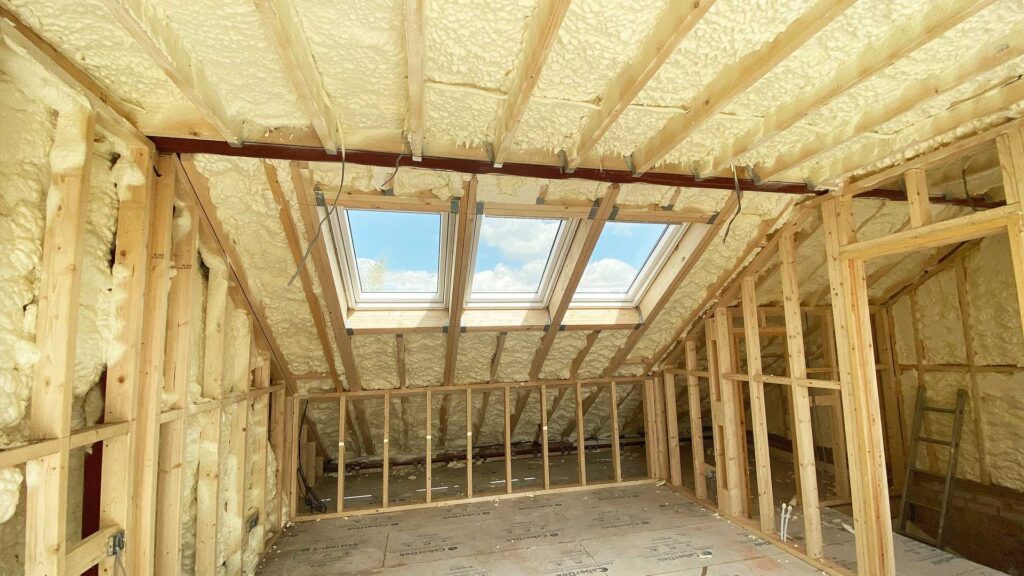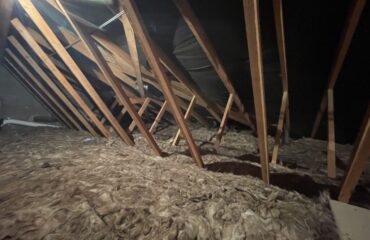Have you ever wondered…
- What is spray foam?
- Is it safe?
- Does it give off gasses?
- Will it cause condensation?
- Will it cause rot?
- Will it trap moisture?

These are just some of the many questions & concerns potential clients raise with us, sometimes because of reading negative press or outdated misinformed information. Whatever your concern is and wherever its derived from, we’re looking to bust those myths and get to the facts about open cell spray foam.
In short open cell spray foam insulation is a polyurethane. It’s a plastic material that can be rigid or flexible – in open cells case, its flexible.
Why Icynene?
Green Horizon Energy Solutions work exclusively with Icynene from Huntsman Building Solutions, which is a water blown open cell foam. It uses water as a blowing medium and although there are some initial risks for the spray foam operative during the spraying process, once cured within a couple of minutes it is completely inert. Clients can return to the spray area within a couple of hours. The install of the product is a chemical process so we have to be mindful of this and for this reason the sprayers will wear a full air fed mask to prevent inhalation and to protect their eyes and face from encountering the raw material which has an exothermic reaction at 85c when expanding.
Icynene is water blown and therefore does not have an off-gassing period. Some other types of foam use chemicals in the blowing phase, trapping tiny bubbles of gas within the foam which take time to work their way out (off-gassing), whereas water blown foam creates C02 bubbles which pop as it expands and are replaced immediately with tiny air pockets. This means there is no off-gassing period and the only thing contained within the foam is air.
What is open cell?
Open cell foam means exactly what it says, the cells are open – this is important when preventing trapped moisture. It will allow moisture vapor diffusion also known as breathability. Breathability is a products ability to allow moisture vapor to diffuse through the material. Timbers need to breathe and by using an open cell foam this can still happen naturally. If you wrapped a bit of wood in a plastic bag it would eventually begin to sweat as the plastic bag is not breathable and there is nowhere for the moisture to go, but with open cell foam the moisture vapor can move through the material and into the atmosphere, working in essence, like a wind proof jacket as opposed to a plastic mac. We all know how you can sweat in a plastic mac as the moisture is unable to escape, yet in a windproof jacket this is not an issue because moisture is allowed to move freely through the material. By allowing materials to breathe you also in turn prevent the issue of rot.
Condensation concerns?
Once open cell foam is applied to the underside of a roof or floor boards, the risk of condensation is drastically reduced. Condensation forms when warm moisture laden air finds a cold surface and a dew point occurs which then cause the air to condensate on the cold surface, by spraying the underside of the roof you remove the cold surfaces for air to condensate on. There is 100x less moisture via diffusion than there is via convection, for example if you drilled a 2cm hole in a plasterboard it would carry 100x more moisture through than it would via diffusion alone.
The open cell nature of the foam will allow all materials in contact to continue to breathe naturally. Huntsman Building Solutions foams (Icynene), where developed in Canada in 1986 for timber framed houses that need to breathe. They have a long-standing reputation in the field of insulation with proven results in making homes more energy efficient and preventing any of the issues listed above. In the UK the foam has gone through numerous independent tests to determine the performance and deemed it suitable for the building market for both new and existing dwellings. It has achieved BBA & BDA approval and is approved for building warranties with NHBC as well as being recommended by the Energy Saving Trust.
Still want to know more?
We are always on hand to answer any further questions you might have regarding our open cell foam and we will always give you open and honest advise so get in touch to find out more.


